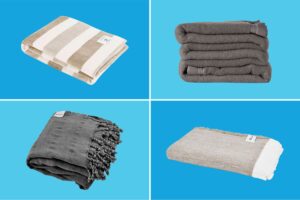
DENVER — President Donald Trump’s latest tariff proposal may not have been unexpected for industry leaders such as Lee Mayer, CEO of Havenly Brands, but the size of the tariffs imposed across many countries was.
“We’re pretty surprised by both the scope of the tariffs and the steep increases across countries — like Vietnam — that, frankly, have traditionally maintained low tariffs on most U.S. exports with our category,” Mayer said. “It obviously impacts most folks that try to provide high-quality furniture at accessible prices, given much of our furniture supply chain relies on global manufacturing.”
Havenly Brands operates multiple online and physical retail nameplates, including The Citizenry, which emphasizes globally sourced home goods; St. Frank, an online textiles and décor site; The Inside and Interior Define, both focused on custom furniture and décor; furniture brand Burrow; and Havenly interior design services.
Based on this newest tariff proposal, Mayer said: “Like many others, we’re contemplating, among other things, raising prices as we retool our supply chain to adapt to these latest changes.
“We don’t typically anticipate pricing increases, as tariffs usually just pass through,” she said. “However, we’re now facing an average product cost of 30% or more. As a result, we’re considering price increases for customers along with other measures to protect our margins; otherwise, we simply wouldn’t be able to survive.”
How this will impact consumers could play out in different ways, according to Mayer. “I think economic uncertainty causes customers to hold back on purchasing,” she said, noting that markets had been down following Trump’s announcement.
But there’s also a get-it-while-you-can reaction among shoppers. “We might see a short-term bump until April 9,” she added, “as consumers probably understand that pricing is likely to rise afterward.”
Even though Mayer sees more manufacturing returning to the United States as a result of the tariffs, especially at the high end, for her business “importing still appears less expensive than domestic manufacturing, although we’re continuing to explore this option.”
“The challenge, as many of our U.S.-based manufacturers learned in 2021,” she pointed out, “is capacity — not just in terms of manufacturing space, but also finding sufficient labor, given the American workforce today is largely service oriented.”
See also:
a
Credit: homeaccentstoday.com










